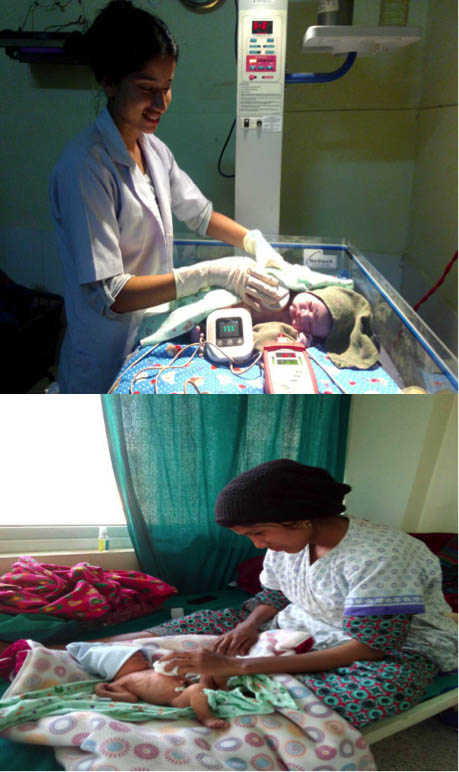
In Nepal, there is a high anemia prevalence among children between 6 and 17 months (72–78 %). In collaboration with Uppsala University, Sweden and in partnership with Lifeline, Nepal, a randomized clinical trial was carried out in Nepal to investigate the effects of delayed umbilical cord clamping, compared with early clamping, on hemoglobin and ferritin levels at 8 and 12 months of age in infants at high risk for iron deficiency anemia. The study included 540 late preterm and term infants born vaginally at a tertiary hospital in Kathmandu, Nepal, from October 2 to November 21, 2014. Follow-up was completed on December 11, 2015 involving blood levels of hemoglobin and ferritin at 8 and 12 months of age. Analysis was based on intention to treat. After multiple imputation analysis, infants undergoing delayed clamping had higher levels of hemoglobin (10.4 vs 10.2 g/dL; difference, 0.2 g/dL; 95% CI, 0.1 to 0.4 g/dL). At 8 months, the risk for iron deficiency was reduced in the delayed clamping group in 60 (22.2%) vs 103 (38.1%) patients (relative risk, 0.58; 95% CI, 0.44-0.77; NNT, 6; 95% CI, 4-13). At 12 months, delayed cord clamping still resulted in a hemoglobin level of 0.3 (95% CI, 0.04-0.5) g/dL higher than in the early cord clamping group and a relative risk for anemia of 0.91 (95% CI, 0.84-0.98), resulting in a NNT of 12 (95% CI, 7-78). Consequently, delayed cord clamping reduces anemia at 8 and 12 months of age in a high-risk population, which may have major positive effects on infants’ health and development.



